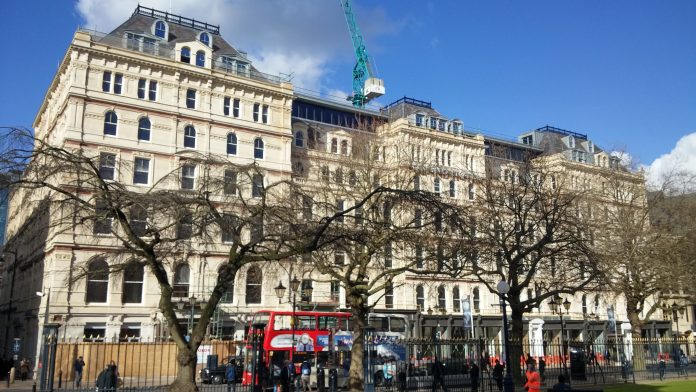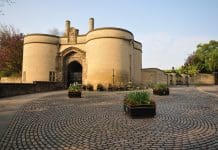The Grade II* listed Grand Hotel in Birmingham has been restored, following renovation work by Arup
Originally built in the 1870s and one of the best surviving examples of Victorian architecture in Birmingham, the Grand Hotel had fallen into a state of disrepair since ceasing trading in 2002.
Nearly two decades on from when it last closed its doors to customers, Arup has transformed the Birmingham landmark.
Arup uncovered issues with the original design, which included incorrect weathering details that were absorbing rainwater rather than pushing it away. The stone itself also appeared to be of poor quality, unsuitable for areas of heavy exposure.
Stripping away the coatings and stabilising the damaged stonework would significantly eat into the finished surface of the façade, altering its carved details and creating a misshapen appearance.
To mitigate this effect and reinstate the original grandeur of the façade, Arup developed a set of conservation principles to carve into the surviving stone, effectively re-setting the entire building envelope backwards.
Point-cloud surveys of the façade were taken before and after the coatings were stripped, allowing the team to specify where and how each individual flat area should be finished.
This information was translated into a set of small elevations for use by the masons on site, showing how far each block should be dressed back to contribute correctly to the overall arrangement.
The project supported businesses and craftspeople from the region, sourcing both labour and materials locally.
This included stonemasons from Midland Conservation Ltd, who carried out repairs using traditional tools and techniques, working by hand to conserve almost every piece of decorative as well as most of the plain ashlar stone.
This work led to Historic England describing the scale and traditional nature of the stonemasonry repairs at the Grand Hotel as unique, at the time in 2015, for a non-ecclesiastical building.
One of Birmingham’s most loved buildings open again
Thomas Pearson, associate at Arup, said: “In our conservation architecture practice, we place particular importance on the original materials of a listed building.
“In this case the decay was so widespread that repairing the Grand Hotel’s façade demanded technical innovation, design creativity and painstaking craftsmanship.
“I am proud to have led Arup’s team, providing conservation architecture, stone consultancy and façade engineering services to save the building from demolition. It is hugely satisfying to see one of Birmingham’s most loved buildings open again as a landmark hotel for the city.”














